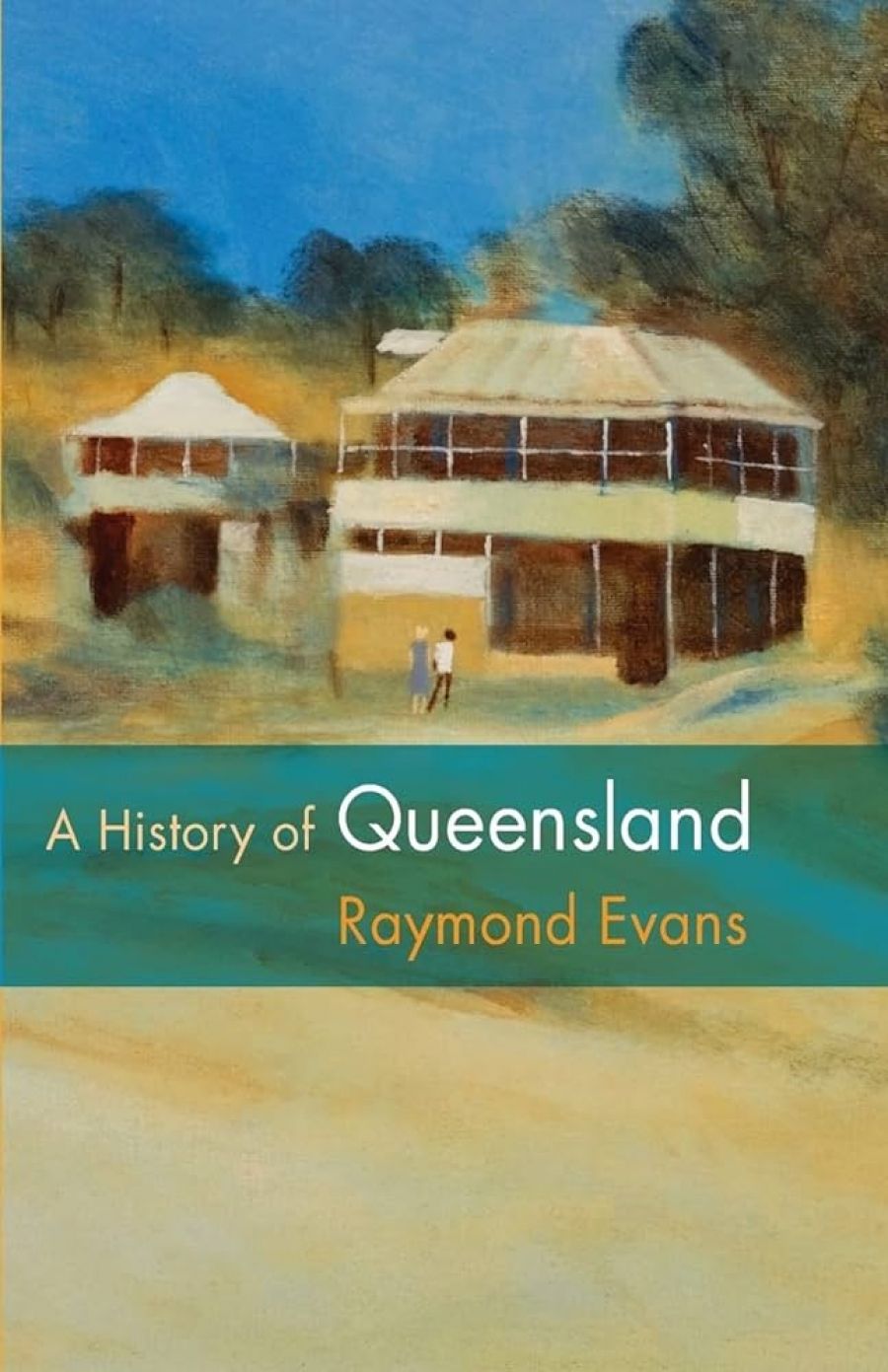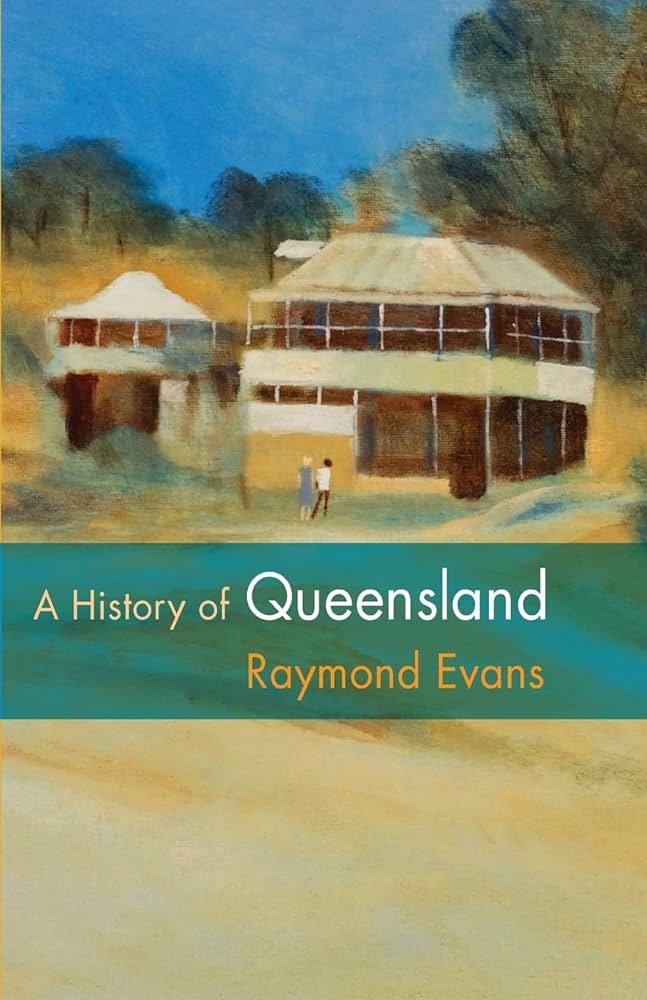
- Free Article: No
- Contents Category: Australian History
- Custom Article Title: The bellwether state
- Review Article: Yes
- Article Title: The bellwether state
- Online Only: No
- Custom Highlight Text:
Raymond Evans completed his History of Queensland on a Brisbane verandah in late 2005. The Howard government was still in power, and Premier Peter Beattie was grappling with regional health care. By the time of publication, John Howard was gone, and Beattie had resigned – though not before contracting Ross Fitzgerald to write the official state history for Queensland’s sesquicentenary in 2009.
- Book 1 Title: A History of Queensland
- Book 1 Biblio: CUP, $36.95 pb, 328 pp
- Book 1 Cover Small (400 x 600):

- Book 1 Cover (800 x 1200):

Much has happened in Queensland since Ross Fitzgerald published a two-volume history in the early 1980s – including significant scholarship. Evans’s new History of Queensland is part of a series that Cambridge University Press launched in 2006, with histories of New South Wales by Beverley Kingston, and of Victoria by Geoffrey Blainey. Evans has focused more exclusively than these authors on his home state, with a particular interest in inter-group struggle. The profound conflict here was between indigenous Australians and newcomers with their steel, germs and guns.
At Federation perhaps 25,000 Aboriginal people survived from a pre-contact population in the Queensland area of probably more than 200,000. There were nearly 500,000 new arrivals, the majority in towns and cities. They were Australia’s most heterogeneous population (and most Catholic), with five or six times as many non-European migrants as in Victoria and New South Wales, and large minorities from northern, southern and eastern Europe.
Evans’s account is organised chronologically. The opening chapter summarises long-term environmental changes, addresses estimates of the indigenous Australian population, and summarises debates about early contact. The story from 1820 divides into blocks of two or three decades, beginning with the Moreton Bay penal settlement, and the punishment system eventually undone partly by evangelical and Catholic reformers. Happenstance sited early Brisbane in a neutral zone for salt- and freshwater peoples. Some assisted the early government by apprehending absconding convicts. Conflict ensued over food crops, grazing, quarrying and cotton. The region’s first substantial colonial massacre occurred on Moreton Island in 1830. Within the decade, falling wool prices encouraged squatters to move north and west, grabbing land. The Native Mounted Police Force provided an official armed presence on this frontier from the late 1840s. Jonathan Richards’s The Secret War (2008), reviewed on page 40 of this issue, tells this tragic story in more detail.
Through much of the nineteenth century, Queensland’s economy was based on sheep, generating decades of conflict between squatters against workers, the self-employed and small-employers. John Dunmore Lang’s anti-transportation crusade added a moral dimension to the question of who did what work, where. The British government supported the emerging colony’s separation from New South Wales with a concerned eye on French activity in Oceania. Evans observes wryly that in the year of separation (1859), Darwin, Smiles, Mill and Marx all published key works, respectively linking progress with struggle, poverty with shame, freedom with happiness, and well-being with the relations of production.
Queensland’s population boomed through the next two decades, creating new tensions over labour, land and ethnicity. Brief gold rushes saw conflict between Europeans, Chinese and Aborigines. Indentured Melanesian labourers, recruited extensively through the 1880s and 1890s, made Queensland’s population yet more heterogeneous. Sliding pay scales reflected the perceived worth of field workers of different ethnicity. Mostly, Aboriginal workers earned rations. The 1897 Aboriginals Act formally captured this discriminatory reality and piloted racially segregative policies elsewhere. In Drawing the Colour Line (2008) – reviewed on page thirty-one – Henry Reynolds and Margaret Lake describe the little understood international influence of such policies.
Industrial relations in pastoral areas and on Brisbane’s waterside looked different. Dry-dock workers formed the nation’s first blue collar union; 10,000 bush workers striking across western Queensland in 1878 linked unionism and republicanism; wharf lumpers initiated financial aid for their London counterparts in 1889. Decades later, Brisbane waterside workers led a strike to oppose the re-establishment of Dutch colonial rule in the East Indies. Queensland led this trend: from Federation to the Great War, unionism expanded twice as fast as in the rest of Australia. Brisbane’s general strike of 1912 was the country’s first.
Queensland’s narrow vote for Federation reflected continuing tension between regionalism, nationalism and internationalism. Several regions called for separation. Yet the state provided such key national symbols as ‘Waltzing Matilda’ and the Anzac Day commemoration. International politics had local ramifications, as Queensland’s Irish, Germans, Russian populations remained Australia’s largest, and Brisbane’s Russians were set upon in the 1919 Red Flag Riots. Resistance movements of a different hue set national trends. There was the widespread 1920s campaign against the koala and possums fur trade, indigenous resistance campaigns in the 1940s and 1950s, and the later environmental campaigns to save Fraser Island and the Great Barrier Reef.
Through all of these changes runs the drama of state politics, marked frequently ‘by cronyism and fierce animosities’. In the late nineteenth century, nationalist leader Thomas McIlwraith struggled ‘to separate public dreams from private interest’ while struggling against Samuel Griffith’s liberals. In a forerunner of national developments, the two later formed a coalition ministry. Later still, the erudite Griffith penned the widely admired Queensland Criminal Code.
Queensland Labor governments fought with their industrial militant counterparts through much of the twentieth century. The party split between socialists and non-socialists in 1908, and again nearly fifty years later under Vince Gair. Key political dramas of the 1920s included the Land Act, which provoked a financial blockade from London financiers; Labor stacking of the upper house of Parliament, so as to abolish it; and Premier McCormack’s sacking the entire railways department. The so-called Traffic Act of 1938 enabled subsequent governments to invoke states of emergency. Queensland’s role as staging zone for the Pacific War brought dramatic social changes. As Evans puts it, ‘British high (official) culture and respectability locked horns with US low (popular) culture and “vulgarity” in a battle for youth’s allegiances’.
Postwar governments sought to attract capital to a low-wages state. Rule-bending and breaking was not confined to the recurring states of emergency: Ned Hanlon’s Labor government redistributed electoral boundaries in 1949, dividing the state into four separate voting zones with unequal quotas, and ironically assisting subsequent coalition governments of Jack Pizzey and Bjelke-Petersen. The vegetarian son of a Lutheran pastor, who spent much of the 1930s and 1940s dwelling in a converted cow-bail while clearing 40,000 hectares of brigalow scrub, Bjelke-Petersen now seems a strange caricature of key themes in Queensland history. His abolition of death duties in 1977 not only attracted capital to the state, but large numbers who travelled north with that capital.
Brisbane was the key site for these political battles. Ipswich, Rockhampton, Townsville, Cairns all rate a mention to illustrate larger themes. For Aurukun, a succinct summary of a century of failed social policy helps to explain contemporary social collapse. Queensland’s last two hundred years are rich historical material, and one can sense the frustrations of trying to make some sense of it all in a single volume. Evan’s does well to weave together larger demographic and economic changes with the personal clashes of politics, frequently illustrated with an apt vignette, such as Governor and Lady Bowen’s official welcoming ball, a living symbol of early colonial hierarchies. There is simply no space to explore in detail the complexities of daily life or changing sensibilities. Evans, instead, refers to several classic novels. His text should prime the interested reader to look further afield. Turn, for instance, to Ray Evans’s own entries on a website such as http://www.multicultural-australia.com.au. The pictures come alive and serve as a drop-down-menu for this very readable introductory overview.


Comments powered by CComment